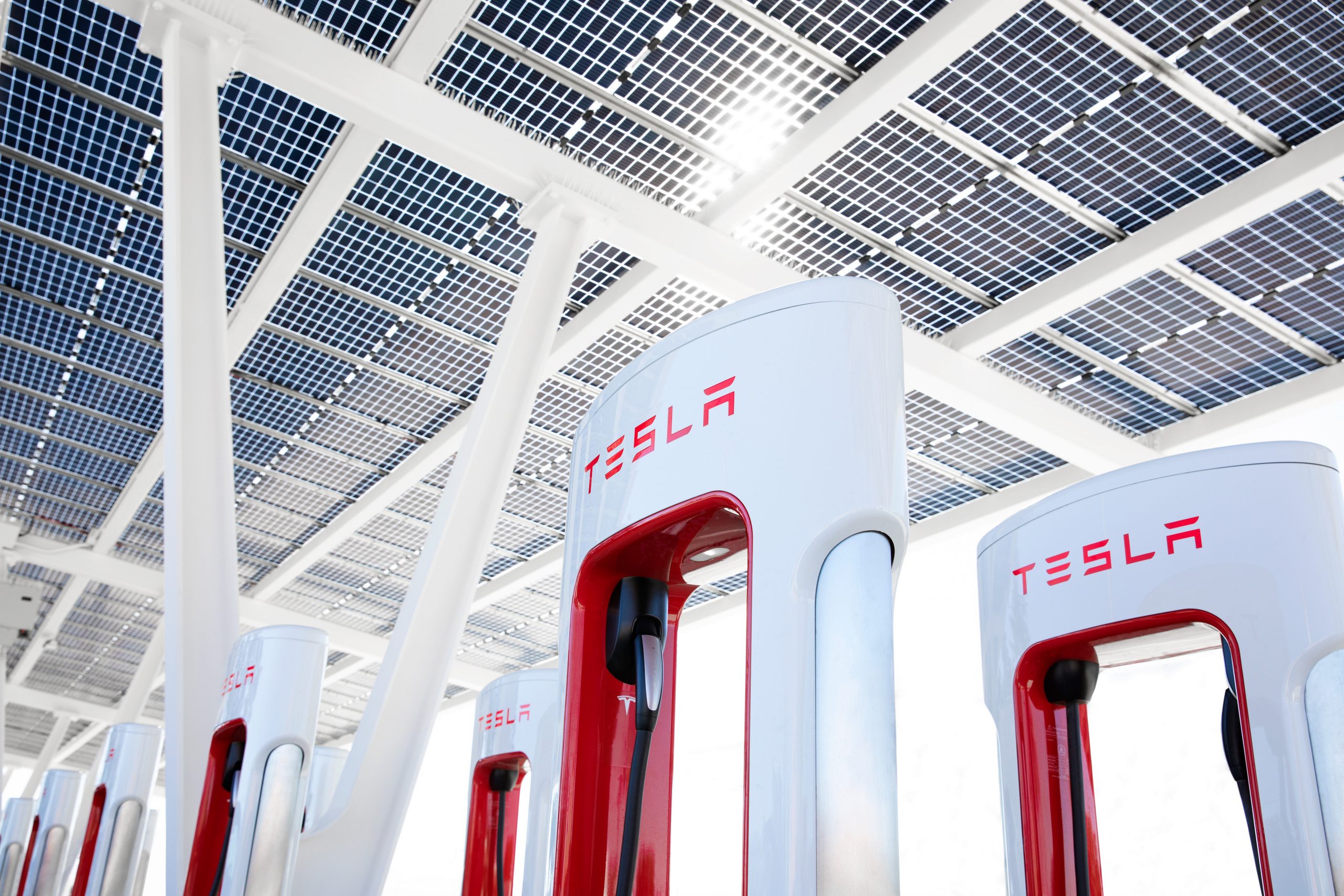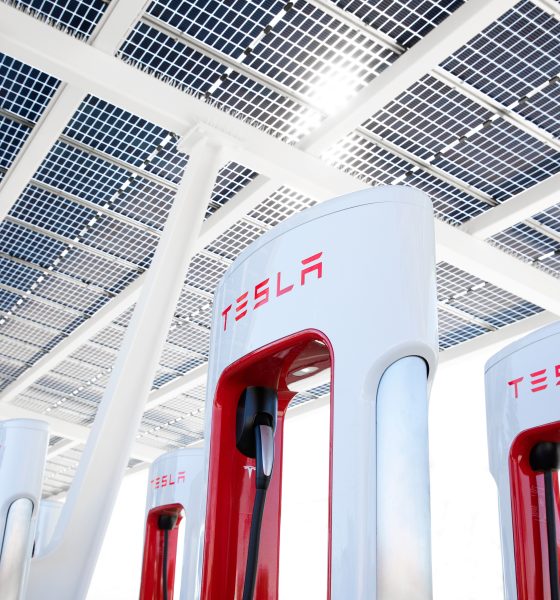

Investor's Corner
Tesla set for ‘massive trajectory’ for Q3 deliveries fueled by September demand
-
- Wedbush analyst Dan Ives says September Tesla deliveries are on pace for “massive trajectory”
- Ives reiterates “Outperform” rating; holds $1,000 price target
- Tesla on pace for 230,000 deliveries, Ives predicts
Tesla (NASDAQ: TSLA) is set for its biggest quarter in company history, according to Wedbush analyst and $TSLA bull Daniel Ives. Ives, who has periodically put his two cents regarding Tesla stock for several years, has spoken highly of the electric automaker, giving the company credit for being the leading force in the up-and-coming “green tidal wave” that will overtake the automotive sector as a whole. Tesla’s Q3 2021 is likely to be fed in part by September demand, which Ives believes is trending toward historic levels thanks to the automaker’s ability to avoid the long and drawn-out shortage of semiconductor chips.
Ives, who currently maintains an “Outperform” rating on $TSLA stock with a price target of $1,000, said that he is confident Tesla would exceed consensus expectations, which have Q3 deliveries set at 123,000 vehicles. Ives is more convinced of Tesla hitting 230,000 deliveries in Q3, mainly fueled by a “massive trajectory” of between 145,000 to 150,000 deliveries in September alone.
“The pace of EV deliveries in the US and China have been robust the last 4-6 weeks with an eye-popping growth trajectory heading into 4Q and 2022 for Musk & Co.,” Ives wrote in a note to investors.
September may be the saving grace for Tesla in Q3, especially as Elon Musk wrote in a leaked email to Tesla employees earlier this month that Q3 has the potential to be the company’s most remarkable. The CEO told workers that this week has the potential to be the “most intense delivery week ever,” as Tesla continues to trend toward record numbers once again. Tesla has not seen a decline in sales or deliveries of its vehicles Quarter-over-Quarter since Q1 2019.
The only reason Ives believes Tesla won’t have an even bigger quarter than he expects is due to the semiconductor chip shortage. While Tesla was able to avert most of the production delays and manufacturing stoppages with the creation of its own in-house microcontrollers, there was still a negative effect on the company’s production and delivery rate in July and August, he said in the note. Ives believes Tesla would have delivered around 80,000 to 90,000 vehicles for the first two months of the quarter. Overall, Ives said that the chip shortage may have decreased the overall production and delivery number by around 40,000 units.
RELATED:
Tesla (TSLA) gets upbeat estimates from Wall St amid “strongest ever” quarter
Tesla’s decision to export vehicles from Shanghai to Europe earlier this month to begin sales of the Model Y crossover on the continent could have also affected the automaker’s overall outlook for Q3. Ives believes the intense and complicated logistical process may have thrown a few wrenches into Tesla’s overall growth.
Even still, as Tesla navigated through the chip shortage and handled a new logistical process with relative ease, Ives is convinced that Tesla will still report its biggest quarter when Q3 wraps up tomorrow.
Analysts at other financial firms have already listed their estimates for Tesla’s third quarter. Many analysts have expectations for around 230,000 vehicles, including Alex Potter of Piper Sandler and Credit Suisse analyst Dan Levy. The analysts estimated 233,000 and between 225,000-230,000 deliveries for Q3, respectively.
Disclosure: Joey Klender is a TSLA Shareholder.

Investor's Corner
Tesla stock closes at all-time high on heels of Robotaxi progress

Tesla stock (NASDAQ: TSLA) closed at an all-time high on Tuesday, jumping over 3 percent during the day and finishing at $489.88.
The price beats the previous record close, which was $479.86.
Shares have had a crazy year, dipping more than 40 percent from the start of the year. The stock then started to recover once again around late April, when its price started to climb back up from the low $200 level.
This week, Tesla started to climb toward its highest levels ever, as it was revealed on Sunday that the company was testing driverless Robotaxis in Austin. The spike in value pushed the company’s valuation to $1.63 trillion.
Tesla Robotaxi goes driverless as Musk confirms Safety Monitor removal testing
It is the seventh-most valuable company on the market currently, trailing Nvidia, Apple, Alphabet (Google), Microsoft, Amazon, and Meta.
Shares closed up $14.57 today, up over 3 percent.
The stock has gone through a lot this year, as previously mentioned. Shares tumbled in Q1 due to CEO Elon Musk’s involvement with the Department of Government Efficiency (DOGE), which pulled his attention away from his companies and left a major overhang on their valuations.
However, things started to rebound halfway through the year, and as the government started to phase out the $7,500 tax credit, demand spiked as consumers tried to take advantage of it.
Q3 deliveries were the highest in company history, and Tesla responded to the loss of the tax credit with the launch of the Model 3 and Model Y Standard.
Additionally, analysts have announced high expectations this week for the company on Wall Street as Robotaxi continues to be the focus. With autonomy within Tesla’s sights, things are moving in the direction of Robotaxi being a major catalyst for growth on the Street in the coming year.
Elon Musk
Tesla needs to come through on this one Robotaxi metric, analyst says
“We think the key focus from here will be how fast Tesla can scale driverless operations (including if Tesla’s approach to software/hardware allows it to scale significantly faster than competitors, as the company has argued), and on profitability.”

Tesla needs to come through on this one Robotaxi metric, Mark Delaney of Goldman Sachs says.
Tesla is in the process of rolling out its Robotaxi platform to areas outside of Austin and the California Bay Area. It has plans to launch in five additional cities, including Houston, Dallas, Miami, Las Vegas, and Phoenix.
However, the company’s expansion is not what the focus needs to be, according to Delaney. It’s the speed of deployment.
The analyst said:
“We think the key focus from here will be how fast Tesla can scale driverless operations (including if Tesla’s approach to software/hardware allows it to scale significantly faster than competitors, as the company has argued), and on profitability.”
Profitability will come as the Robotaxi fleet expands. Making that money will be dependent on when Tesla can initiate rides in more areas, giving more customers access to the program.
There are some additional things that the company needs to make happen ahead of the major Robotaxi expansion, one of those things is launching driverless rides in Austin, the first city in which it launched the program.
This week, Tesla started testing driverless Robotaxi rides in Austin, as two different Model Y units were spotted with no occupants, a huge step in the company’s plans for the ride-sharing platform.
Tesla Robotaxi goes driverless as Musk confirms Safety Monitor removal testing
CEO Elon Musk has been hoping to remove Safety Monitors from Robotaxis in Austin for several months, first mentioning the plan to have them out by the end of 2025 in September. He confirmed on Sunday that Tesla had officially removed vehicle occupants and started testing truly unsupervised rides.
Although Safety Monitors in Austin have been sitting in the passenger’s seat, they have still had the ability to override things in case of an emergency. After all, the ultimate goal was safety and avoiding any accidents or injuries.
Goldman Sachs reiterated its ‘Neutral’ rating and its $400 price target. Delaney said, “Tesla is making progress with its autonomous technology,” and recent developments make it evident that this is true.
Investor's Corner
Tesla gets bold Robotaxi prediction from Wall Street firm
Last week, Andrew Percoco took over Tesla analysis for Morgan Stanley from Adam Jonas, who covered the stock for years. Percoco seems to be less optimistic and bullish on Tesla shares, while still being fair and balanced in his analysis.

Tesla (NASDAQ: TSLA) received a bold Robotaxi prediction from Morgan Stanley, which anticipates a dramatic increase in the size of the company’s autonomous ride-hailing suite in the coming years.
Last week, Andrew Percoco took over Tesla analysis for Morgan Stanley from Adam Jonas, who covered the stock for years. Percoco seems to be less optimistic and bullish on Tesla shares, while still being fair and balanced in his analysis.
Percoco dug into the Robotaxi fleet and its expansion in the coming years in his latest note, released on Tuesday. The firm expects Tesla to increase the Robotaxi fleet size to 1,000 vehicles in 2026. However, that’s small-scale compared to what they expect from Tesla in a decade.
Tesla expands Robotaxi app access once again, this time on a global scale
By 2035, Morgan Stanley believes there will be one million Robotaxis on the road across multiple cities, a major jump and a considerable fleet size. We assume this means the fleet of vehicles Tesla will operate internally, and not including passenger-owned vehicles that could be added through software updates.
He also listed three specific catalysts that investors should pay attention to, as these will represent the company being on track to achieve its Robotaxi dreams:
- Opening Robotaxi to the public without a Safety Monitor. Timing is unclear, but it appears that Tesla is getting closer by the day.
- Improvement in safety metrics without the Safety Monitor. Tesla’s ability to improve its safety metrics as it scales miles driven without the Safety Monitor is imperative as it looks to scale in new states and cities in 2026.
- Cybercab start of production, targeted for April 2026. Tesla’s Cybercab is a purpose-built vehicle (no steering wheel or pedals, only two seats) that is expected to be produced through its state-of-the-art unboxed manufacturing process, offering further cost reductions and thus accelerating adoption over time.
Robotaxi stands to be one of Tesla’s most significant revenue contributors, especially as the company plans to continue expanding its ride-hailing service across the world in the coming years.
Its current deployment strategy is controlled and conservative to avoid any drastic and potentially program-ruining incidents.
So far, the program, which is active in Austin and the California Bay Area, has been widely successful.








